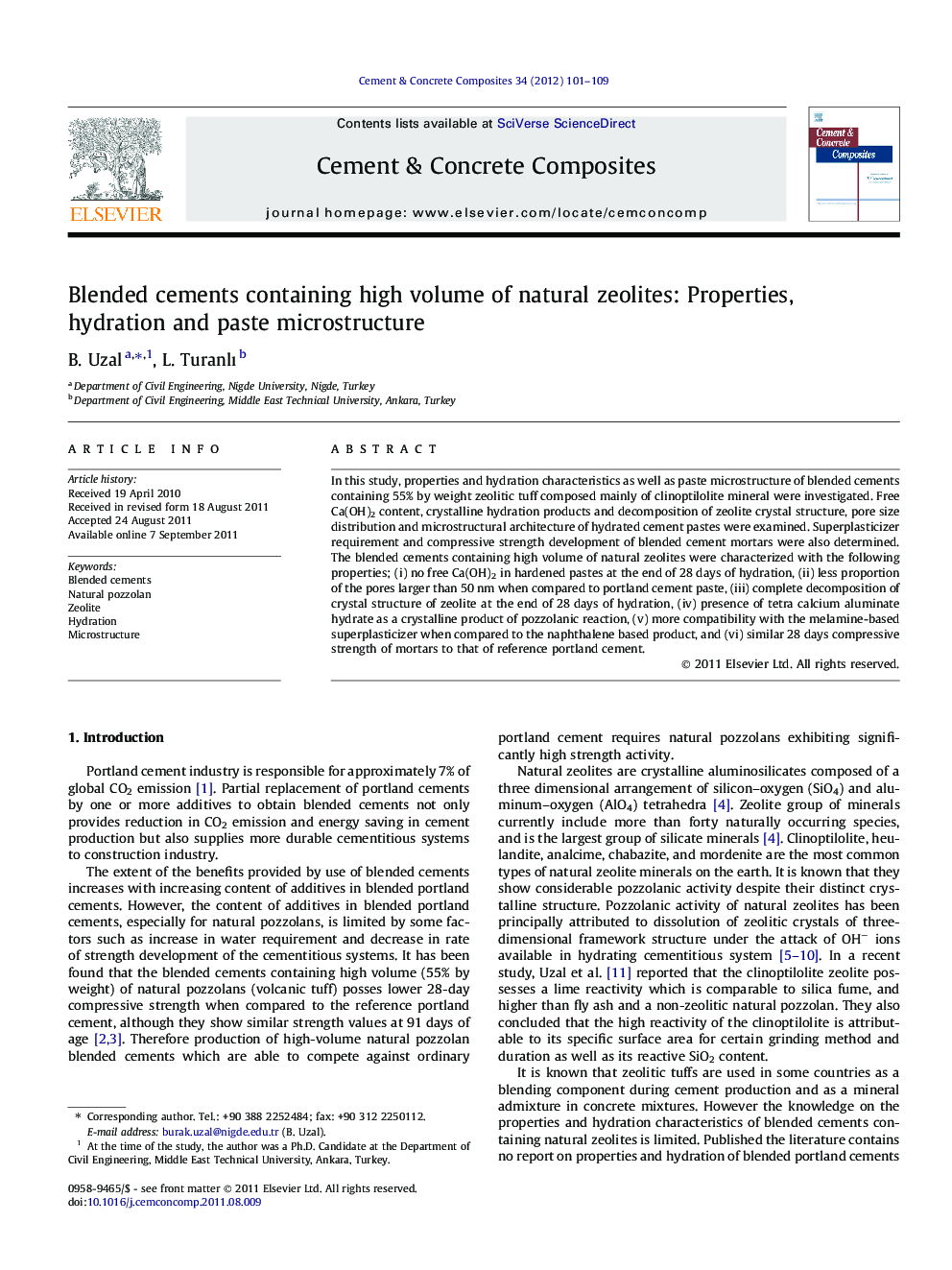| Article ID | Journal | Published Year | Pages | File Type |
|---|---|---|---|---|
| 1454979 | Cement and Concrete Composites | 2012 | 9 Pages |
In this study, properties and hydration characteristics as well as paste microstructure of blended cements containing 55% by weight zeolitic tuff composed mainly of clinoptilolite mineral were investigated. Free Ca(OH)2 content, crystalline hydration products and decomposition of zeolite crystal structure, pore size distribution and microstructural architecture of hydrated cement pastes were examined. Superplasticizer requirement and compressive strength development of blended cement mortars were also determined. The blended cements containing high volume of natural zeolites were characterized with the following properties; (i) no free Ca(OH)2 in hardened pastes at the end of 28 days of hydration, (ii) less proportion of the pores larger than 50 nm when compared to portland cement paste, (iii) complete decomposition of crystal structure of zeolite at the end of 28 days of hydration, (iv) presence of tetra calcium aluminate hydrate as a crystalline product of pozzolanic reaction, (v) more compatibility with the melamine-based superplasticizer when compared to the naphthalene based product, and (vi) similar 28 days compressive strength of mortars to that of reference portland cement.
► Blended cements containing high volume of natural zeolite were studied. ► Hydration characteristics and paste microstructure were investigated. ► No free Ca(OH)2 in pastes at the end of 28 days of hydration was observed. ► Crystal structure of zeolite completely decomposed at the end of 28 days of age. ► Similar 28-day compressive strength to that of reference Portland cement was found.
